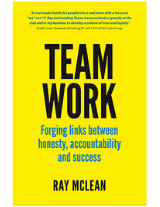Three weeks after the COVID pandemic hit Australia earlier this year, I had a conversation with Mary Campbell, the CEO at TAFE Queensland, that has stuck with me. They were at the beginning of the process of transitioning a large percentage of their 4,000+ staff to working from home, and her comment to me at the time was, “This will be great for us … now we will really have to show how much we trust our people.”
Having worked with TAFE Queensland for the past six years I have witnessed firsthand the investment their leaders have made in building strong relationships with their teams. COVID-19 provided a real-life scenario to test this work.
If there is one common thread to the past seven months it is that relationships and trust are now different to what they were in our pre-COVID working lives.
Trust between a leader and their team, and between team members themselves, has always been a critical factor to performance, but when you’re not able to see or interact with your team in a physical sense (we have had the ability to ‘bounce’ off one another taken away) on a day-to-day basis it can be a challenging thing for many leaders.
At Leading Teams we are great believers in the adage that trust is a two-way street. If you don’t have complete trust in certain team members it doesn’t mean that they are untrustworthy, it may just mean that the relationship you have built with that team member isn’t strong enough. ‘Build the relationship before you need it’ was perhaps an appropriate quote for leaders prior to experiencing a worldwide pandemic.
Trust can be a broad and subjective term, however, when we work with teams and leaders, we like to make it easy for people to understand what it really means, and to make it tangible to use in everyday conversations. It doesn’t mean that leaders should trust people blindly. Hoping it can or will be done is not a strategy.
Professional trust has two key components – competence and character.
Competence takes into consideration a team member’s ability to do their job. Do they have the skills to perform their role, and can they execute these skills when they are under pressure? In the COVID environment, working from home has potentially made some people’s jobs easier, while for others it has been much more challenging, particularly when you throw kids running around the house and making unscheduled visits into our videoconferences into the mix.
Character relates to the team member firstly being good for their word, and then (and perhaps most importantly in a team) would they put the team before themselves when required? This lens could be applied to their performance generally, or more specifically around things like working from home.
So, if you apply those four criteria to each of your team members, are there any gaps? If there are some gaps how might you go about addressing them?
Trust is generally not a 0 out of 10, or a 10 out 10 commodity. In an organisation with several hundred staff suddenly working from home, some will have the competence and character to handle this, while others might not. The key is ensuring your team clearly understand your expectations and to then create time and space to review.
A commitment to review can allow leaders to place their trust in people and provide support and guidance if things don’t go to plan. Allowing this space to learn and make mistakes can create opportunities for development and growth, as well as creating a sense of ownership. It isn’t about just trusting people blindly – clear expectations and a commitment to review allows leaders to lead and team members to have responsibility without feeling they are being micromanaged. Balance is the key.
Poor leaders will simply avoid this type of conversation and blame their team members for not hitting the mark.
These conversations can help us to improve our trust with others, while also helping them to improve their performance. We need to be prepared to have these conversations regularly, and to have an environment where the conversations get results. You guessed it – an environment built on mutual trust.
In June I sat in on an on-line session where 100+ leaders from across TAFE Queensland reviewed how they had handled the first 8 weeks of the pandemic. It was one of the most affirming review sessions I have witnessed…it was inspiring. The investment in trust had paid off, and their people had stepped up. If there is a large organisation in Australia that has handled COVID more effectively than TAFE Queensland I would love to hear about it.
So, who do you really trust in your team?
Tim joined Leading Teams in 2012 after experiencing our program as a client. Tim is a facilitator based in Northern NSW.
Learn more Tim Ferguson.




